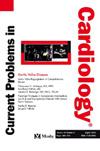肺超声识别急性失代偿性心力衰竭患者再次住院风险的应用。
IF 3
3区 医学
Q2 CARDIAC & CARDIOVASCULAR SYSTEMS
引用次数: 0
摘要
出院时残余充血可预测急性失代偿性心力衰竭(ADHF)的不良结局。肺超声(LUS)是评估肺充血的可靠工具。本研究旨在评价一种简化的4区LUS方法用于识别出院后高危心力衰竭患者。方法:这项前瞻性研究纳入了无可治疗继发原因的ADHF住院的成年人。我们采用4区LUS方法量化b线。主要终点是180天内死亡率或再住院的综合指标。我们使用单变量和多变量Cox模型来评估b线的预后价值。受试者工作特征(ROC)曲线确定最佳b线阈值。结果:我们纳入155例患者(中位年龄:81岁[IQR 75-85];52.9%的男性)。随访结束后,53例(34.2%)患者达到主要终点。出院时b线数量的ROC曲线显示AUC为0.8,其中7条b线被确定为最佳截止线(灵敏度:70%,特异性:82%)。在单变量分析中,出院时全球b线计数(HR: 1.33, 95% CI 1.22-1.45)与主要终点显著相关。使用≥7条b线的截止值,相关性更强(HR: 6.92, 95% CI 3.80-12.60)。多变量调整后,≥7条b线在出院时仍然显著(HR: 4.41, 95% CI 1.98-9.81)。结论:在我们的人群中,出院时检测到7个或更多b线可作为确定180天内有死亡或再住院风险的患者的可靠标志。本文章由计算机程序翻译,如有差异,请以英文原文为准。
Utility of lung ultrasound to identify patients at risk of rehospitalization for acute decompensated heart failure
Introduction
Residual congestion at hospital discharge predicts adverse outcomes in acute decompensated heart failure (ADHF). Lung ultrasound (LUS) is a reliable tool for assessing pulmonary congestion. This study aims to evaluate a simplified 4-zone LUS method for identifying heart failure patients at risk after discharge.
Methods
This prospective study included adults hospitalized for ADHF without treatable secondary causes. We employed a 4-zone LUS method to quantify B-lines. The primary endpoint was a composite of mortality or rehospitalization within 180 days. We used univariate and multivariate Cox models to evaluate the prognostic value of B-lines. A receiver operating characteristic (ROC) curve identified the optimal B-lines threshold.
Results
We included 155 patients (median age: 81 years [IQR 75–85]; 52.9 % male). After the follow-up period, 53 (34.2 %) patients met the primary endpoint. The ROC curve for the number of B-lines at discharge showed an AUC of 0.8, with 7 B-lines identified as the optimal cutoff (sensitivity: 70 %, specificity: 82 %). In univariate analysis, the global B-line count at discharge (HR: 1.33, 95 % CI 1.22-1.45) was significantly associated with the primary endpoint. Using a cutoff of ≥7 B-lines, the association was stronger (HR: 6.92, 95 % CI 3.80-12.60). After multivariable adjustment, ≥7 B-lines at discharge remained significant (HR: 4.41, 95 % CI 1.98-9.81).
Conclusion
In our population, the detection of 7 or more B-lines at discharge serves as a reliable marker for identifying patients at risk of mortality or rehospitalization within 180 days.
求助全文
通过发布文献求助,成功后即可免费获取论文全文。
去求助
来源期刊

Current Problems in Cardiology
医学-心血管系统
CiteScore
4.80
自引率
2.40%
发文量
392
审稿时长
6 days
期刊介绍:
Under the editorial leadership of noted cardiologist Dr. Hector O. Ventura, Current Problems in Cardiology provides focused, comprehensive coverage of important clinical topics in cardiology. Each monthly issues, addresses a selected clinical problem or condition, including pathophysiology, invasive and noninvasive diagnosis, drug therapy, surgical management, and rehabilitation; or explores the clinical applications of a diagnostic modality or a particular category of drugs. Critical commentary from the distinguished editorial board accompanies each monograph, providing readers with additional insights. An extensive bibliography in each issue saves hours of library research.
 求助内容:
求助内容: 应助结果提醒方式:
应助结果提醒方式:


